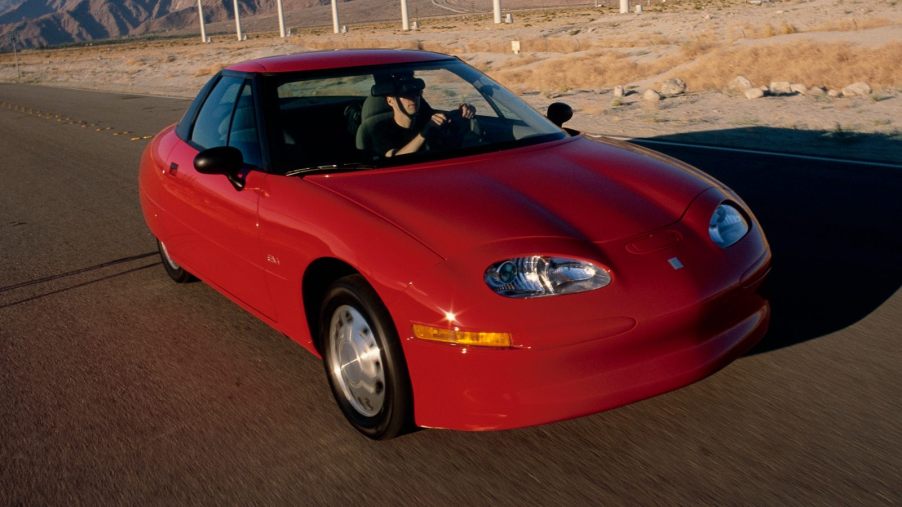
Why the GM EV1 Is a Car You Won’t Find on Roads Today
The GM EV1 might be one of the biggest launching pads in automotive history. Though not the first all-electric car, it helped advanced the technology greatly. Not only was this a much more environmentally friendly car, but it was actually the first to bear the General Motors name instead of one of its marque brands. However, the EV 1 never had the chance to become one of the best electric cars.
Here’s why you don’t see the GM EV1 on the roads today.
The GM EV1 could have become one of the best electric cars
The GM EV1 didn’t hit the market until the 1997 model year. However, the all-electric vehicle has roots that date back to 1990. Back then, GM showed off a concept car called Impact at the Los Angeles Auto Show. According to Hagerty, the automaker later announced plans to move forward with production and to produce about 25,000 units per year.
Unfortunately, General Motors had pretty severe financial troubles at the time. This meant that the automaker had to delay production of the all-electric vehicle. However, testing picked back up in 1993 when the Test and Development team conducted a series of test drives for people in the media. The response was highly positive.

From here, the team hand-built about 50 units and loaned them out to regular drivers for about three months each. Again, Impact received positive reviews, and production moved forward. Of course, the name of the car changed, and GM initially planned for three generations.
Finally, after years of development, the automaker sent out the first batch of 1997 GM EV1 models. The company decided Saturn would be in charge of getting the vehicles to customers. However, only specially trained Saturn dealerships got the cars.
The 1997 GM EV1 uses lead-acid batteries and has a maximum output of 137 horsepower. Regarding range, the EPA estimates that it could go 70 to 90 miles on a full charge. It took about 15 hours to charge with the use of a standard 110-volt outlet. However, the optional 220-volt charger could do it in just a few hours. Of course, the next generation offered NiMH batteries with double the range.
Regarding speed, it takes about 8.5 seconds to get from 0 to 60 miles per hour.
Production ended on the car in 1999 after there were about 1,117 units built. Despite never becoming one of the best electric cars, you can still see the GM EV1 today. However, this isn’t the case for the streets, as it’s mostly in museums. There are about 37 models still in existence. The biggest reason for this is that General Motors never sold the vehicle. Instead, interested drivers in select states could lease it.
So, why did GM discontinue the car? One of the biggest reasons is that customer interest was so low that suppliers were no longer producing replacement parts. In the end, the automaker took back the leased vehicles and destroyed most of them. In most ways, the EV1 was far ahead of its time due to lack of infrastructure.





